
|
|
| The Ceiling Frescoes | ||
Michelangelo returned to Rome in 1508. He was to paint the Twelve Apostles and a few ornaments on the ceiling of the Sistine Chapel. He, who had always insisted that he was a sculptor, was thus to learn the art of fresco painting, and practice it on a vault decorated by fifteenth-century artists as a starry sky. However, as he began work on the project, Michelangelo conceived grander designs for the decoration of the ceiling. He spent the time between then and the 31st of October 1512 painting more than 300 figures on the ceiling of the Sistine Chapel.
The frescoes on the ceiling can be divided into eleven transversal sections: nine bays as well as the spandrels and pendentives over the entry door and the altar, respectively. The lunettes form the highest part of the walls of the chapel; they are situated above the upper cornice and the frescoes on them are also parts of the scheme.
In the scheme of divisions, the key elements are the thrones of the seers (prophets and sibyls) flanked by plinths and colonnettes decorated with pairs of putti supporting the cornice running above the crowns of the spandrels, at about a third of the way across the curve of the vault. Beyond the cornice, the vertical frames flanking the thrones are prolonged as the arches crossing the vault. They divide the vault into ther nine bays in which the stories of Genesis - from the Separation of Light from Darkness to the Drunkenness of Noah - are represented as if they were seen above the space of the chapel, beyond and through the imposing structure of the painted architecture. In the five bays above the thrones of the seers, the field of the narrative scenes is limited in size by the presence of four figures of ignudi, sitting on plinths and bearing garlands of oak leaves and acorns, and of two medallions painted to resemble bronze, with episodes drawn from the books of Genesis, Samuel, Kings, and Maccabees. The marrative scenes begin from the altar wall and proceed toward the entrance; Michelangelo painted them in reverse order since he started from the area near the entrance wall.
On the side walls of the chapel, five prophets alternate with the same number of sibyls, so that each prophet is paired with a sibyl on the opposite wall: the Delphic Sibyl and Joel, Isaiah, and the Erythraean Sibyl, the Cumaean Sibyl and Ezekiel, Daniel and the Persian Sibyl, the Libyan Sibyl, and Jeremiah. The other two prophets - Zechariah and Jonah - are represented on the major axis of the Sistine Chapel.
At the corners of the vault, two spandrels join to form the larger triangular fields of the pendentives, with one of the two vertices pointing downward rather than up. Their surfaces create notable difficulties from a compositional point of view, especially where it was necessary to paint narratives. In the pendentives to the left and right of Zechariah, the story of Judith, and the combat of David and Goliath are represented, respectively. The scenes painted in the pendentives at the sides of Jonah depict the Punishment of Haman, at the left, and the Brazen Serpent, at the right.
Occupying the triangular fields between the thrones of the prophets and sibyls, above the lunettes, the eight spandrels of the side walls contain family groups with figures seated or reclining on the bare ground, in poses that seem to draw on the theme of the flight into Egypt. Together with the groups or single figures in the lunettes on either side of the tablets, they represent the generations of Christ's ancestors, according to the sequence of forty generations listed at the beginning of the Gospel of Saint Matthew.
(Source of Text : Web Gallery of Art)
|
|

(Source of Picture: Wikipedia)
|
|
The Ceiling Frescoes comprise of
| 9 scenes of the Genesis |
Separation of Light from Darkness Creation of the Sun, Moon, and Plants Separation of the Earth from the Waters Creation of Adam Creation of Eve The Fall and Expulsion from Garden of Eden Sacrifice of Noah The Deluge Drunkenness of Noah |
| 4 corner pendentives |
Judith and Holofernes David and Goliath Punishment of Haman The Brazen Serpent |
| 7 prophets |
Zechariah Joel Isaiah Ezekiel Daniel Jeremiah Jonah |
| 5 sybils |
The Delphic Sibyl The Erythraean Sibyl The Cumaean Sibyl The Persian Sibyl The Libyan Sibyl |
| 20 ignudi | |
| 4 pairs of bronze nudes above the pendentives | |
| 8 triangular spandrels with pairs of bronze nudes |
Salmon as a child (?) Jesse as a child (?) Rehoboam as a child(?) Asa as a child (?) Uzziah as a child (?) Hezekiah as a child (?) Shealtiel as a child (?) Zerubbabel as a child(?) |
| 10 medallions |
Abraham about to sacrifice his son Isaac The Destruction of the Statue of Baal The worshippers of Baal being brutally slaughtered Uriah being beaten to death Nathan the priest condemning King David for murder and adultery King David's traitorous son Absalom caught by his hair in a tree while trying to escape and beheaded by David's troops Joab sneaking up on Abner to murder him Joram being hurled from a chariot onto his head Elijah being carried up to Heaven On one medallion the subject is either obliterated or incomplete |
Scenes of the Genesis
 |
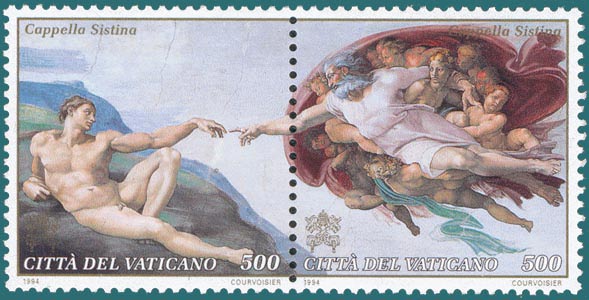 |
|
Creation of the Sun and Moon |
Creation of Man |
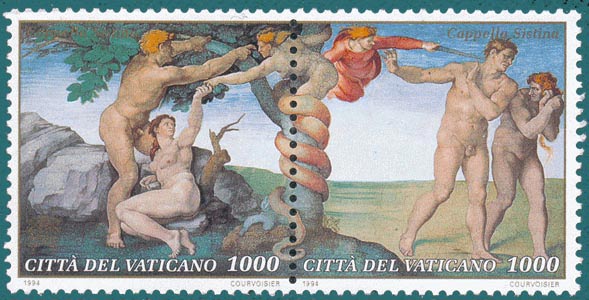 |
 |
|
Original Sin |
The Flood |
_____________________________________________________________________________________________________________________________________________
|
|
|
Creation of the Sun and Moon & Creation of Man |
____________________________________________________________________________________
 |
|
 |
 |
| Creation of Man | |
_____________________________________________________________________________________
 |
 |
 |
|
Adam from 'Creation of Man' |
Michelangelo - Self Portrait |
Eve from 'Original Sin' |
______________________________________________________________________________________________________
 |
 |
| Creation of the Sun and Moon (Detail) | The Flood (Detail) |
|
_____________________________________________________________________________________
|
|
 |
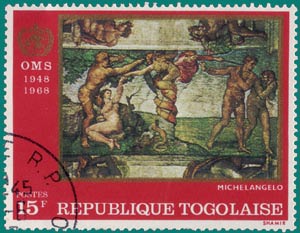 |
| The Deluge | Original Sin |
Prophets and Sybils
 |
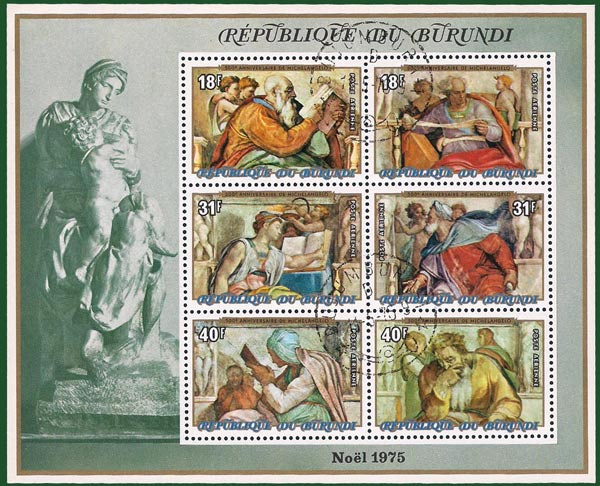 |
 |
 |
 |
|
Prophet Jonah |
Prophet Zechariah |
Prophet Joel |
 |
 |
 |
|
Prophet Daniel |
Prophet Ezekiel |
Prophet Isaiah |
 |
||
|
Prophet Jeremiah |
||
 |
 |
 |
 |
|
Libyan Sybil |
Cumaean Sybil |
Erythraean Sybil |
Delphic Sybil |
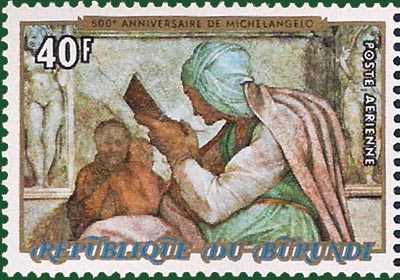 |
|||
| Persian Sybil | |||
________________________________________________________________________________________________________________________________________________
 |
|||
|
Michelangelo Buonarroti |
|||
 |
 |
 |
 |
| Prophet Isaiah | Delphic Sybil | Prophet Jeremiah | Prophet Joel |
__________________________________________________________________________________________________________________________________________
 |
 |
 |
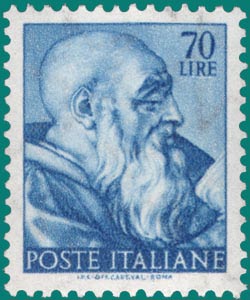 |
||
| Prophet Joel | Prophet Isaiah | Prophet Daniel |
Prophet Zechariah |
||
 |
 |
 |
|||
| Prophet Jonah | Prophet Jeremiah | Prophet Ezekiel | |||
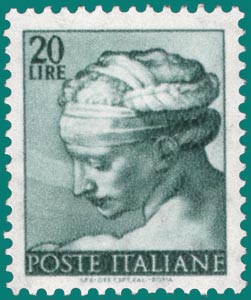 |
 |
 |
 |
||
| Libyan Sybil | Erythraean Sybil | Delphic Sybil | Cumaean Sybil | ||
_______________________________________________________________________________________________________________________________________
 |
 |
||
| Delphic Sybil | Prophet Isaiah | ||
 |
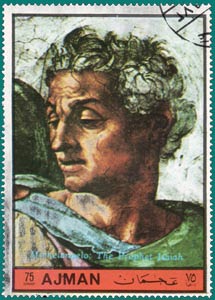 |
||
| Delphic Sybil | Prophet Isaiah | ||
 |
 |
 |
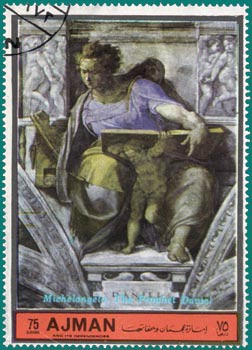 |
| Erythraean Sybil | Prophet Zechariah | Prophet Ezekiel | Prophet Daniel |
_________________________________________________________________________________________________________________________________________
 |
 |
| Delphic Sybil | Cumaean Sybil |
__________________________________________________________________________________
 |
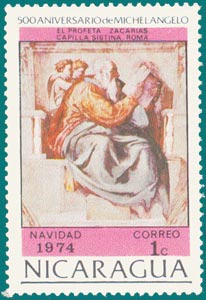 |
| Cumaean Sybil | Prophet Zechariah |
 |
 |
| Delphic Sybil | Libyan Sybil |
Details from Lunettes
The lunettes form the highest part of the walls of the chapel; they are situated above the upper cornice and the frescoes on them are also parts of the scheme.
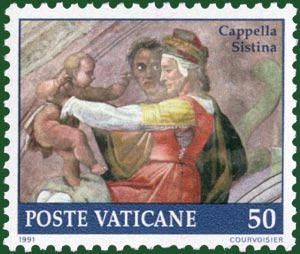 |
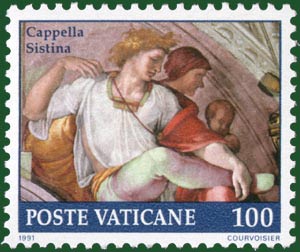 |
 |
 |
|
Eleazar |
Jacob |
||
 |
 |
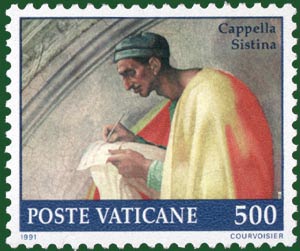 |
 |
|
Josiah |
Asa |
||
 |
 |
 |
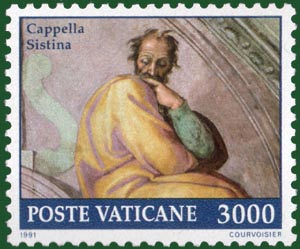 |
|
Zerubbabel |
Azor |
||
(Source of Picture: Web Gallery of Art & Wikipedia)
|
|